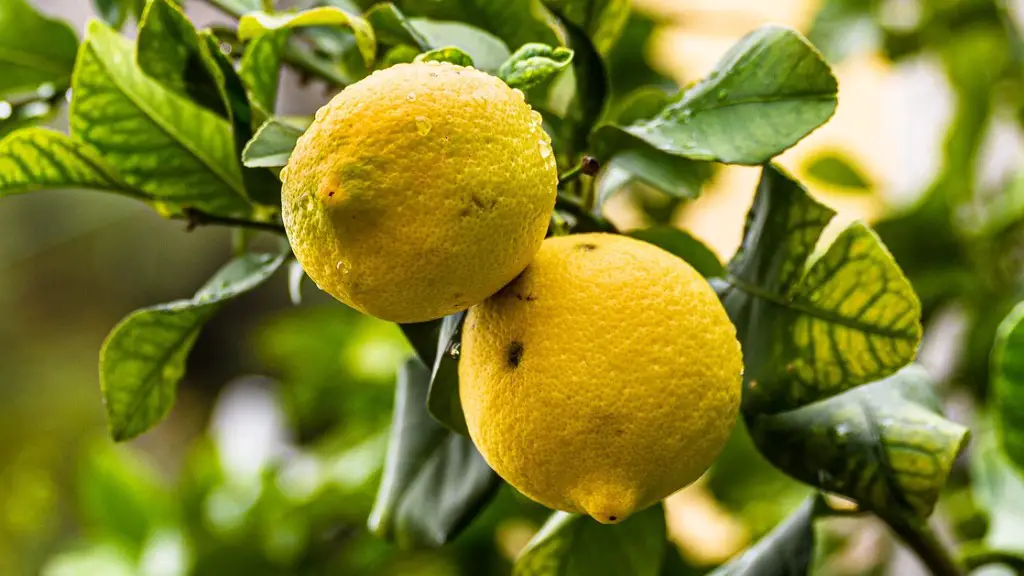People mistakenly assume that it is normal for a lemon tree to lose its leaves. What most gardeners don’t know is that the trees can suffer from various diseases, pests or environmental stress that may cause them to lose some or all of their leaves. This article will explain the four basic causes of a lemon tree losing its leaves, so that gardeners can identify and address the problem.
One of the most common reasons that a lemon tree loses its leaves is due to changes in its environment. This could be due to either sudden changes in temperature or humidity levels, or due to inadequate irrigation. Both of these factors can cause a tree to suffer from shock, resulting in some or all of its leaves falling off. If the tree is exposed to too much light, it can also cause a lemon tree to lose its leaves.
In addition to environmental stress, a lemon tree may also suffer from a variety of diseases or pests. Common diseases include powdery mildew, sooty mold, citrus canker, and black spot. Common pests can also be problematic and include aphids, scale, and mealybugs. If there is an infestation, the tree can quickly lose its leaves.
Nutrient deficiencies can also result in a lemon tree losing its leaves. The tree needs certain minerals and nutrients to thrive, and if they are missing from the soil, the leaves may begin to fall off. Common deficiencies include a lack of nitrogen, phosphorus, or potassium.
Finally, the age of the tree may be a factor in lemons trees losing their leaves. If the tree is getting older, it may begin to shed older leaves as a natural part of its growth cycle. The tree may also be more prone to stress if it is getting more established and growing more branches and leaves.
Lemon Tree Diseases
There are many potential diseases that can cause a lemon tree to lose its leaves. Powdery mildew is a fungal disease that is especially common in regions with high humidity. It can cause yellow blotches to appear on the leaves and the leaves to eventually drop off. Sooty mold is another common fungus that can cause the leaves to turn black, dry up, and eventually fall off. Citrus canker is a bacterial infection that causes yellow spots to develop on the tree’s leaves, as well as on the branches and fruit. Lastly, black spot is a fungal disease similar to powdery mildew, except that it affects the leaves of the tree more strongly.
Pests Affecting Lemon Trees
Pests are another common cause of a lemon tree losing its leaves. Aphids, scale, and mealybugs are among the most common pests, and all can cause damage to the tree if left untreated. Aphids are small, wingless insects that feed on the sap from the leaves of lemon trees. Scale are also small and live in colonies on the tree, but they do not feed on the sap. Instead, they feed on the leaves and fruit, causing discoloration and damage. Mealybugs are a larger pest that feed on the sap of lemon trees, but they are not as destructive as aphids and scale.
Nutrient Deficiencies & Environmental Stress
Nutrient deficiencies and environmental stress are two of the biggest causes of a lemon tree losing its leaves. Lemon trees require certain minerals and nutrients to survive, including nitrogen, phosphorus, and potassium. If these are lacking in the soil, the leaves may begin to yellow, become dry, and eventually fall off. Environmental stress can also be a factor, with sudden changes in temperature or humidity levels being especially damaging. Additionally, too much light can cause the leaves to drop off.
Aging and Growth Cycle
The age of the tree may also play a role in a lemon tree losing its leaves. If the tree is getting older, it may begin to shed older leaves as a natural part of its growth cycle. As the tree matures, it may become more established and begin to produce more leaves and branches. With this increased growth, the tree may also become weaker and more prone to stress, making it more likely to lose its leaves.


